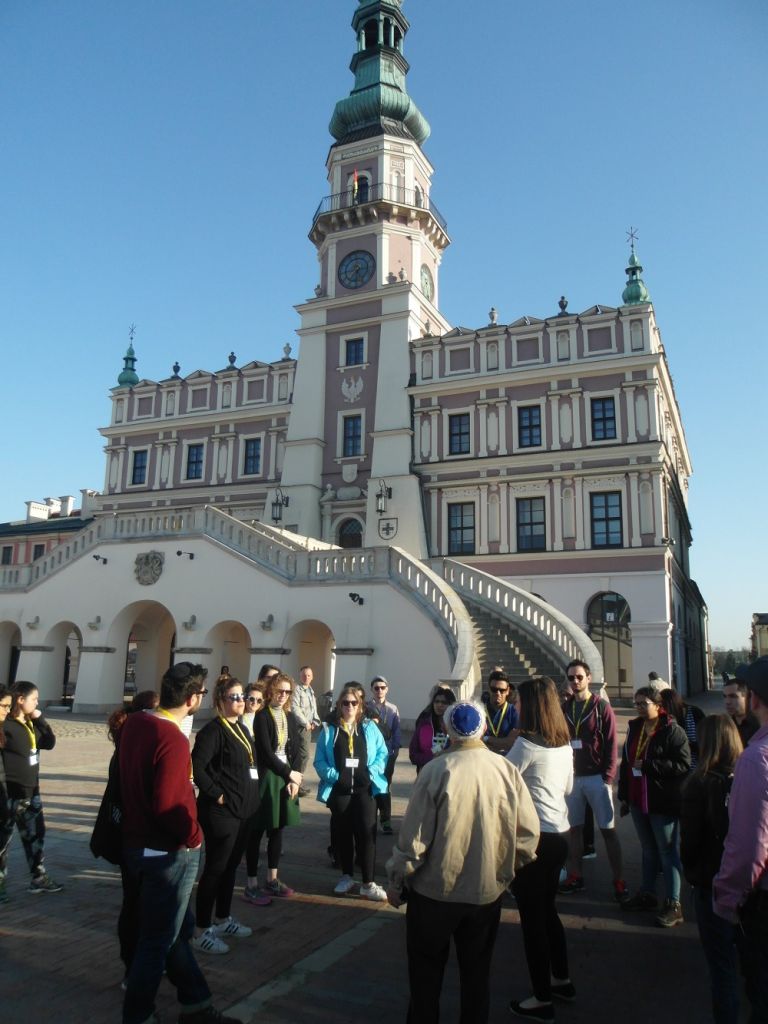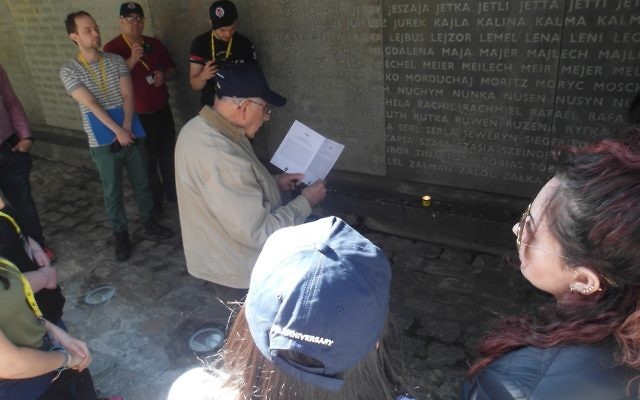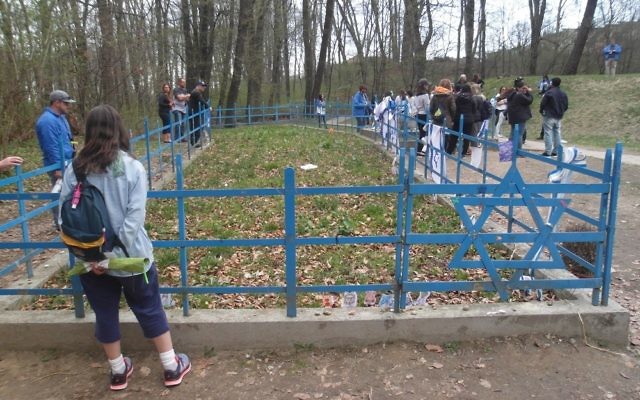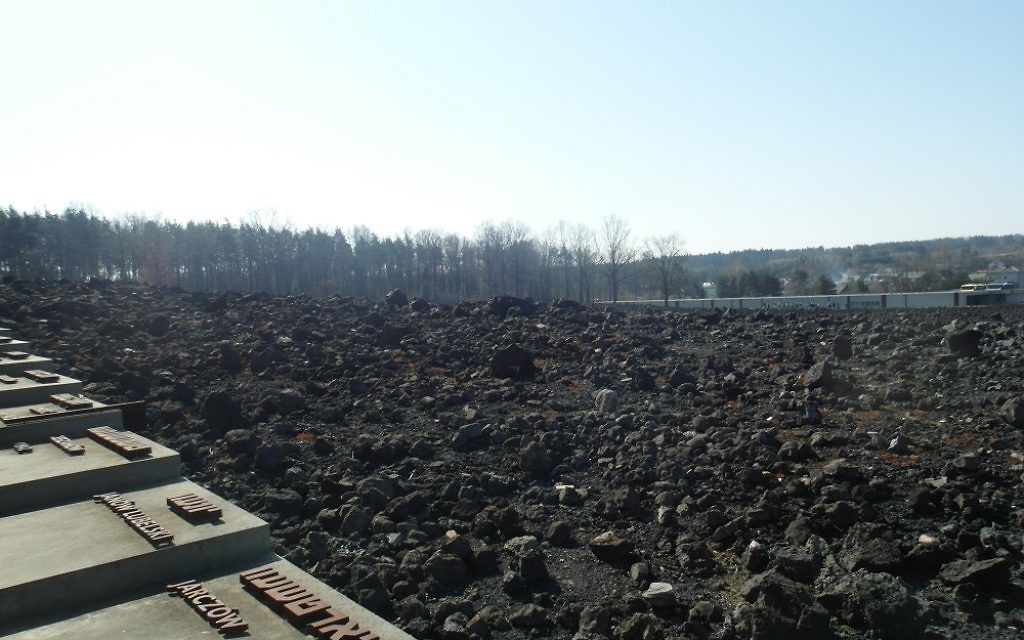March of the Living diary – Part II: Picturesque Zamosc and Belzec death camp
Jewish News’ Andrew Sherwood has joined the UK Delegation in Poland and will be documenting his trip
Jewish News’ Andrew Sherwood is among 300 Brits who have travelled to Poland for this year’s March of the Living trip.
The five-day journey culminates in a 1.5 mile march from Auschwitz I to Birkenau – with more than 12,000 people participating from all around the world – to mark Yom Hashoah, Israel’s Holocaust Memorial Day.
Ahead of the march on Thursday – read Andrew’s reflections, as he learns about the history of Poland’s Jews, and prepares himself to visit the Nazis’ most notorious death camp.
Get The Jewish News Daily Edition by email and never miss our top stories Free Sign Up
Day Three:
Described by Harry as “The Pearl of Poland”, we started the day by visiting Zamosc. Another example of how Jews lived in harmony in the country, the city may have had two squares, one for Jews, one for non-Jews, but that was where their ‘divide’ ended. Bathed in sunshine, taking in the picturesque sights, it was another warm reminder of times gone by.

From the brightness of one period to the sheer horrors of another, our next place of visit was the Belzec Death Camp. Scene of the killings of 434,000 Jews in just nine months, the site was demolished by the Nazis to try and erase any memory of it, and what stands there today is an eerie monument, a large space of land filled with rocks and rubble, with plaques on the ground of each town and city its victims came from. Hard to describe exactly what it [the monument] represents – as is the question posed by several monuments we’d already visited, to try and determine and come up with a definitive answer isn’t important. Firstly, because there isn’t necessarily an answer, it’s open to interpretation, it’s rather how the individual views it and interprets it, and like the atrocity’s that we were learning about, there’s no logical interpretation to that either.
Belzec was where Harry lost his mother and sisters, and following him down the memorial, we watched him recite Kaddish. One of the most moving and emotional things I’ve ever seen, the last part of the recital understandably got to Harry, as it did with members of the Delegation, as it did to me. Silence, was followed by some comforting arms, sometimes there are simply no words to use.

What isn’t so well known to people – and certainly wasn’t to me prior to the trip – was how many Poles have been rewarded as Righteous Among the Nations. Poland currently has nearly 7,000 awards – over 1,000 more than second-placed Netherlands, and our next visit took us to the Markowa – an equally, if not more so unknown village, in where we were now, south-eastern Poland.
Visiting the Ulma-Family Museum of Poles Who Saved Jews in World War II, it is named after the town’s Ulma family, Jozef and his wife Victoria, who were murdered having hidden eight Jews. The story of how their seven children were subsequently murdered – on the basis that it would give the Germans ‘less trouble’ having killed their parents, was just met with a silent disbelief. The only good thing that could possibly be taken from this memorial – and I use this in its loosest possible terms – is that the memorial and its museum were built by the local Poles. They didn’t want to hide its past, they wanted people to know about its Jewish history, how its non-Jews tried to help their Jewish friends.
The final trip of the day took us to Zbylitowska Gora, and more specifically, the Buczyna forest which the Nazis used as a mass execution site. A series of mass graves spread over the uneven land, a place surrounded by greenery and trees. Up to 10,000 people were slaughtered there. Hard to hear and comprehend what we were standing next too, finding out one of the graves was of 800 young children and babies was again too much for some people.

The day ended with another talk from another Holocaust Survivor, Arek Hersh, who lost his family at Auschwitz. Listening to his story, what he had to endure in the camps, we heard how starvation had turned him to eating his own shoes, while others turned to cannibalism, eating the flesh of their dead inmates. I’d read about this in books, seen it in TV documentaries, but never heard it first hand. Arek’s talk to us was planned given that we were visiting Birkenau and Auschwitz tomorrow. As we prepared for that in our final group session of the day, ‘traumatic’ was one of the recurring words people came up with when discussing what they were expecting from the day.
You can read PART I of Andrew’s March of the Living diary here

Thank you for helping to make Jewish News the leading source of news and opinion for the UK Jewish community. Today we're asking for your invaluable help to continue putting our community first in everything we do.
For as little as £5 a month you can help sustain the vital work we do in celebrating and standing up for Jewish life in Britain.
Jewish News holds our community together and keeps us connected. Like a synagogue, it’s where people turn to feel part of something bigger. It also proudly shows the rest of Britain the vibrancy and rich culture of modern Jewish life.
You can make a quick and easy one-off or monthly contribution of £5, £10, £20 or any other sum you’re comfortable with.
100% of your donation will help us continue celebrating our community, in all its dynamic diversity...
Engaging
Being a community platform means so much more than producing a newspaper and website. One of our proudest roles is media partnering with our invaluable charities to amplify the outstanding work they do to help us all.
Celebrating
There’s no shortage of oys in the world but Jewish News takes every opportunity to celebrate the joys too, through projects like Night of Heroes, 40 Under 40 and other compelling countdowns that make the community kvell with pride.
Pioneering
In the first collaboration between media outlets from different faiths, Jewish News worked with British Muslim TV and Church Times to produce a list of young activists leading the way on interfaith understanding.
Campaigning
Royal Mail issued a stamp honouring Holocaust hero Sir Nicholas Winton after a Jewish News campaign attracted more than 100,000 backers. Jewish Newsalso produces special editions of the paper highlighting pressing issues including mental health and Holocaust remembrance.
Easy access
In an age when news is readily accessible, Jewish News provides high-quality content free online and offline, removing any financial barriers to connecting people.
Voice of our community to wider society
The Jewish News team regularly appears on TV, radio and on the pages of the national press to comment on stories about the Jewish community. Easy access to the paper on the streets of London also means Jewish News provides an invaluable window into the community for the country at large.
We hope you agree all this is worth preserving.
-
By Brigit Grant
-
By Laurent Vaughan - Senior Associate (Bishop & Sewell Solicitors)
-
By Laurent Vaughan - Senior Associate (Bishop & Sewell Solicitors)
-
By Laurent Vaughan - Senior Associate (Bishop & Sewell Solicitors)
-
By Laurent Vaughan - Senior Associate (Bishop & Sewell Solicitors)






















